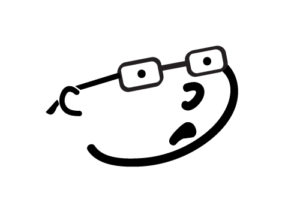Recommended Figure Drawing Books
I have recommended the books below for the variety of their approaches to drawing the figure and the conciseness of their material. Each book offers unique insights and information that aren't usually found in figure drawing books.
Disclaimer: Please bear in mind the links below include affiliate links through Amazon Associates, which means if you purchase an item after clicking on a link here, I earn a commission. Any compensation received helps pay for the cost of running this site.
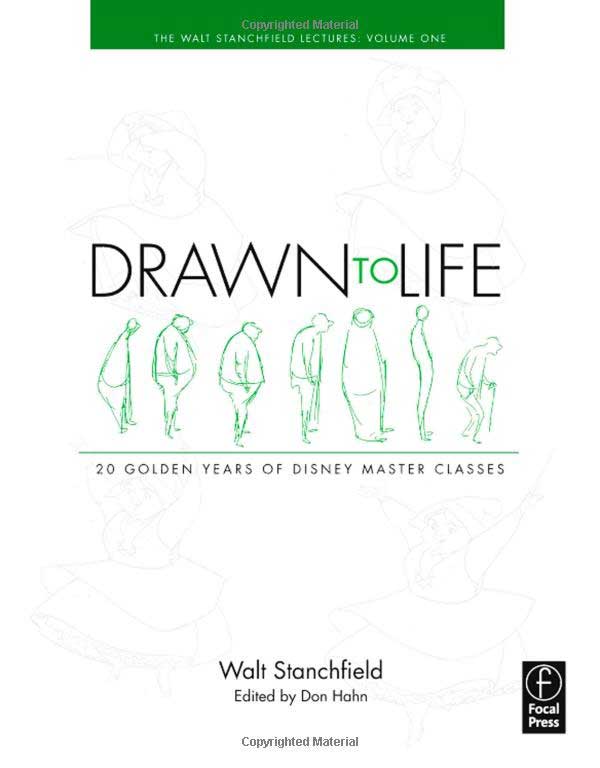
DRAWN TO LIFE: VOL 1 & 2
Walt Stanchfield
These two books are a collection of lectures from Disney animator and teacher Walt Stanchfield. Each lecture is chock full of drawing wisdom, boiling down topics such as drapery, tangents, composition, gesture, anatomy, animation to their essential points. Lots of the drawing insights focus on improving skills for the purposes of better animation and storytelling. What other books spend their entire length discussing Stanchfield can summarize in a page or two, with more insight and pithy diagrams.
SAMPLE PAGE: THE PROBLEM OF TANGENTS AND WHAT TO DO ABOUT THEM
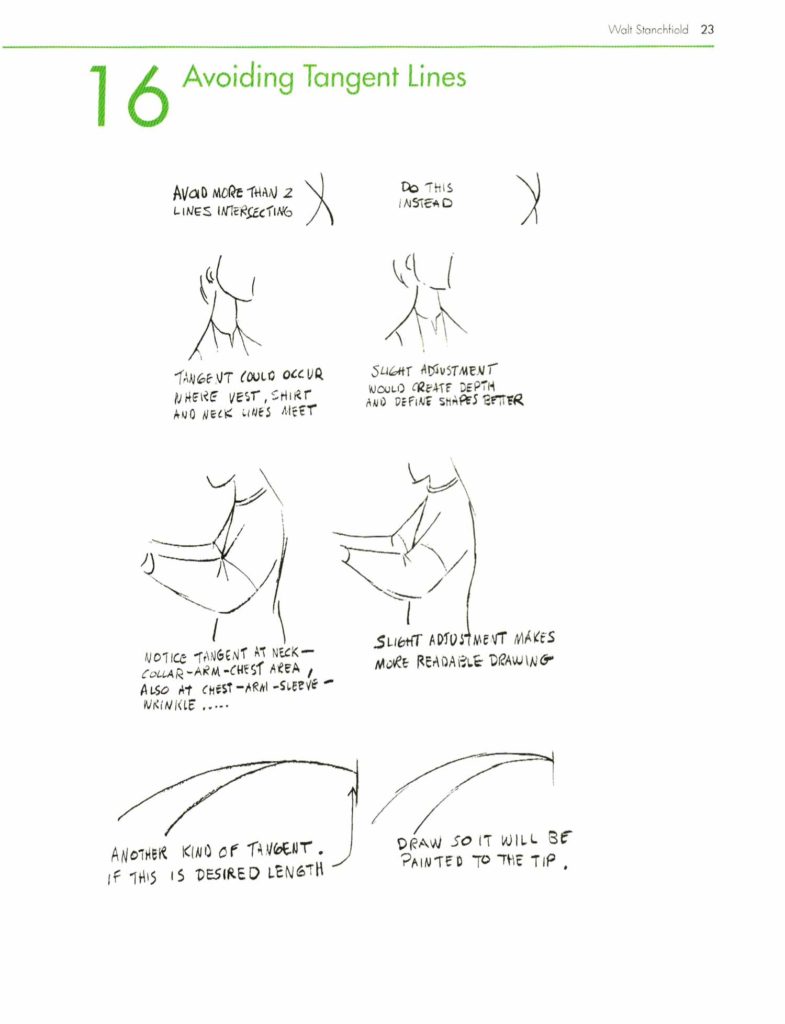
EXCERPTS: USING ANGLES IN FIGURE DRAWING
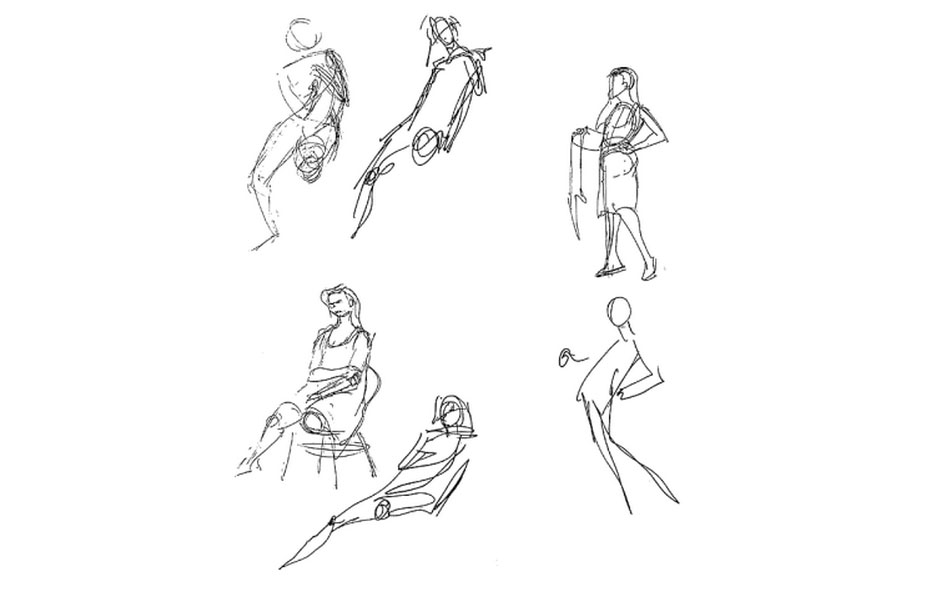
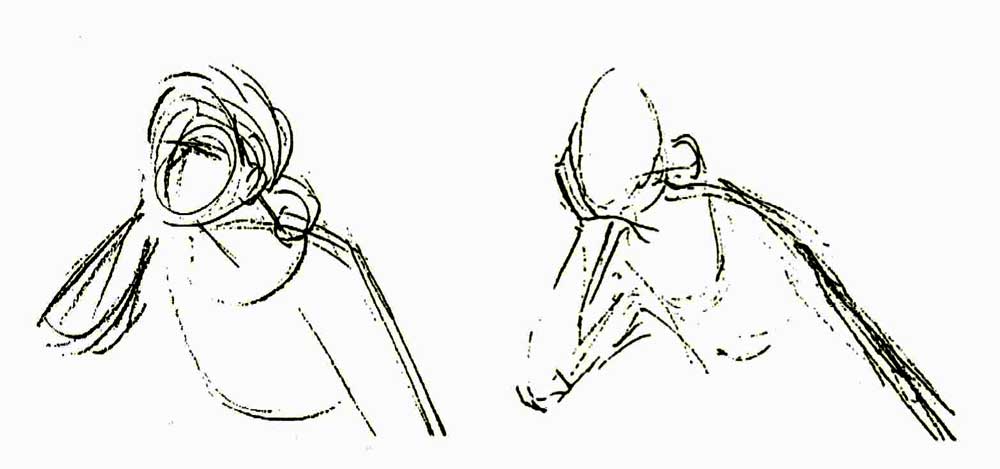
Before After
"In this drawing the gesture was turning out to be of an 'Oh my tooth hurts' nature, rather than one of reflection or deep thought. Strengthening the angles also helped to show the weight of the head on the hand, allowing for a more definite angle of the wrist." - Stanchfield
Even in less active poses, attention to angles can convey more nuance and subtlety.
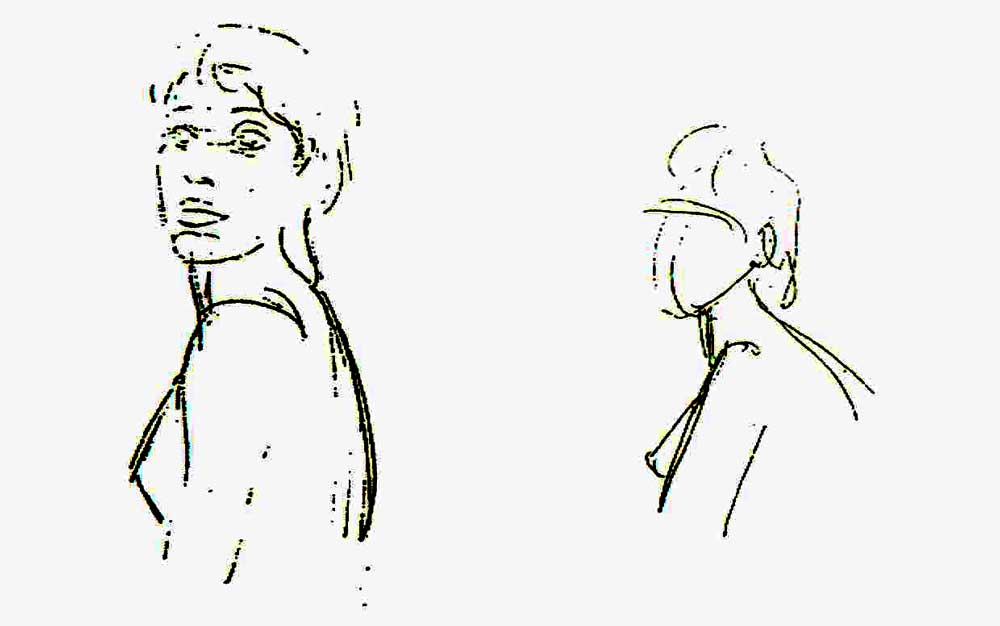
Before After
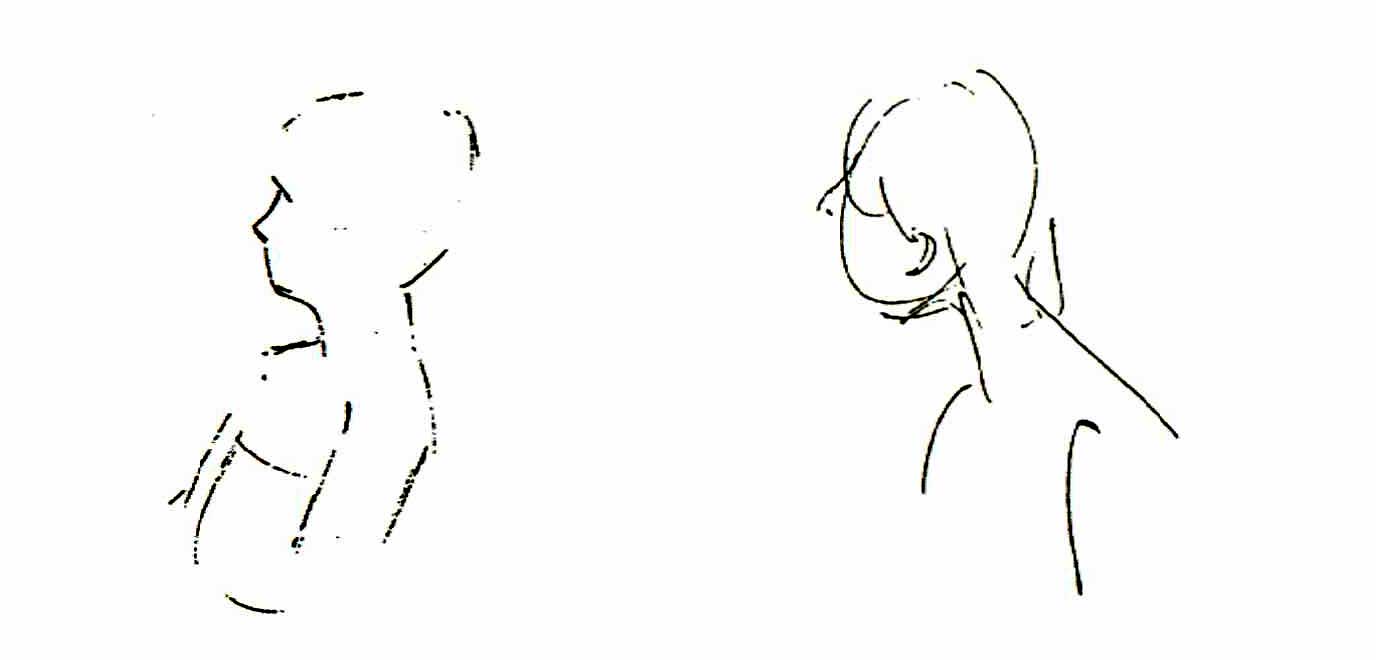
Before After
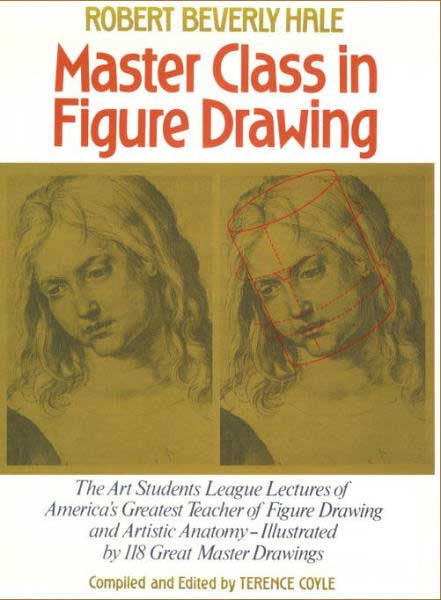
MASTER CLASS IN FIGURE DRAWING
Robert Beverly Hale
Hale has several books published about figure drawing, but this one is my favorite. The book is a collection of his lectures at the Art Students League, where he taught figure drawing for many years. Each lecture focuses on a different part of anatomy and uses master drawings to illustrate the point. What's great is that you see the different approaches artists such as Durer, Degas, and Rembrandt have on drawing the human form, but despite their differing styles, they always show form, mass, and planes.
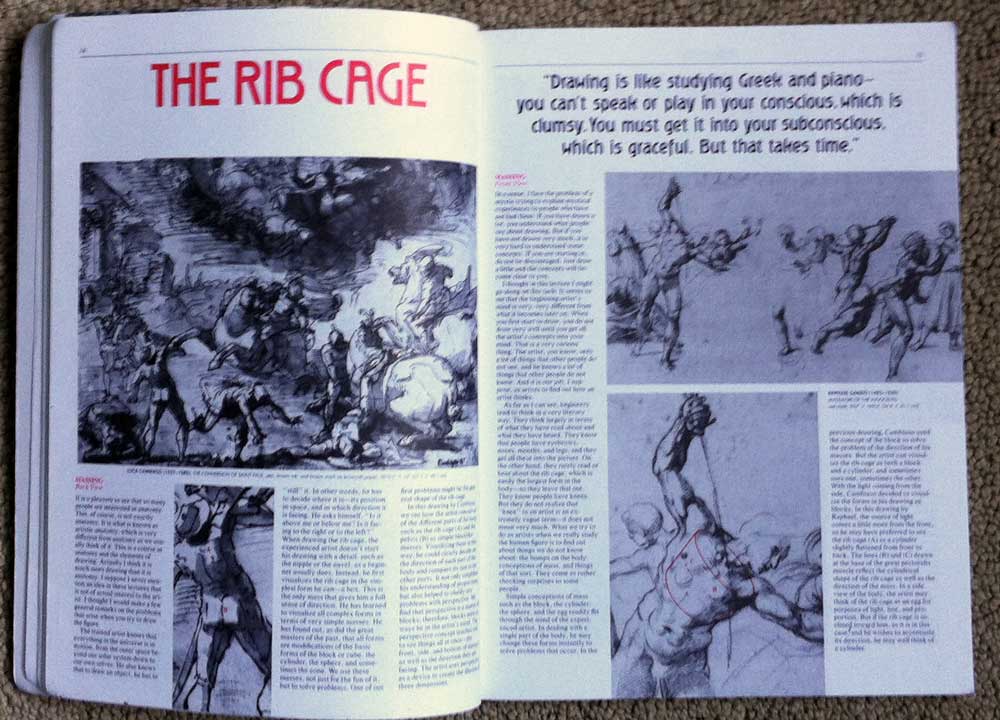
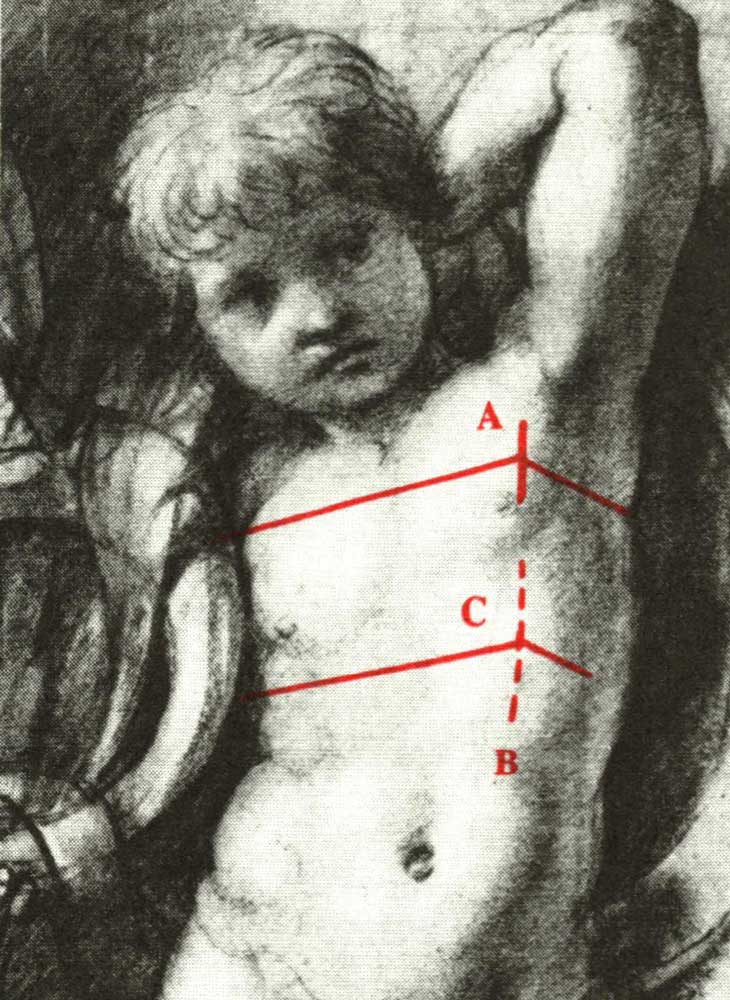
The above diagram shows how the artist Sanzio conceptualized the rib cage as a box and represented the form turning through value.
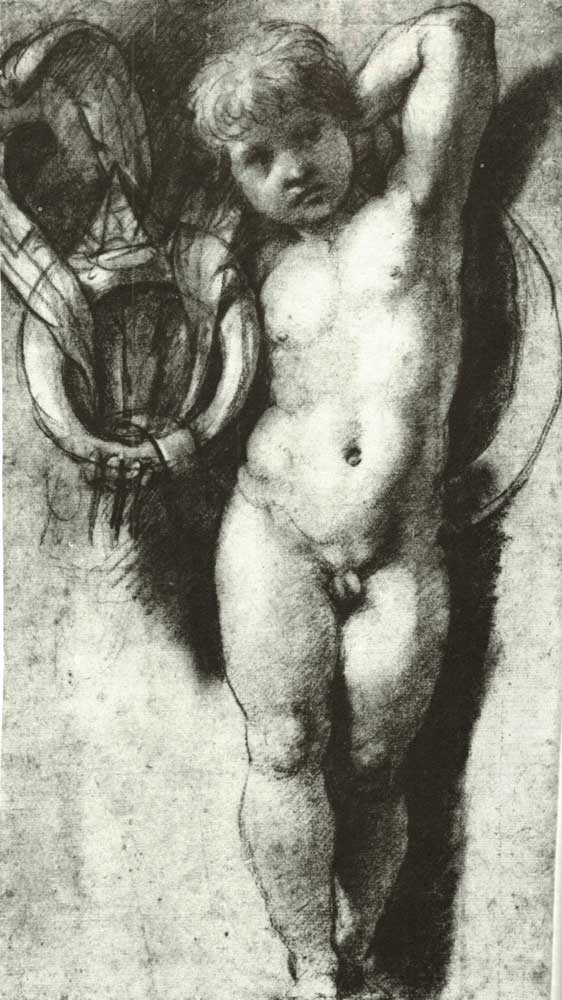
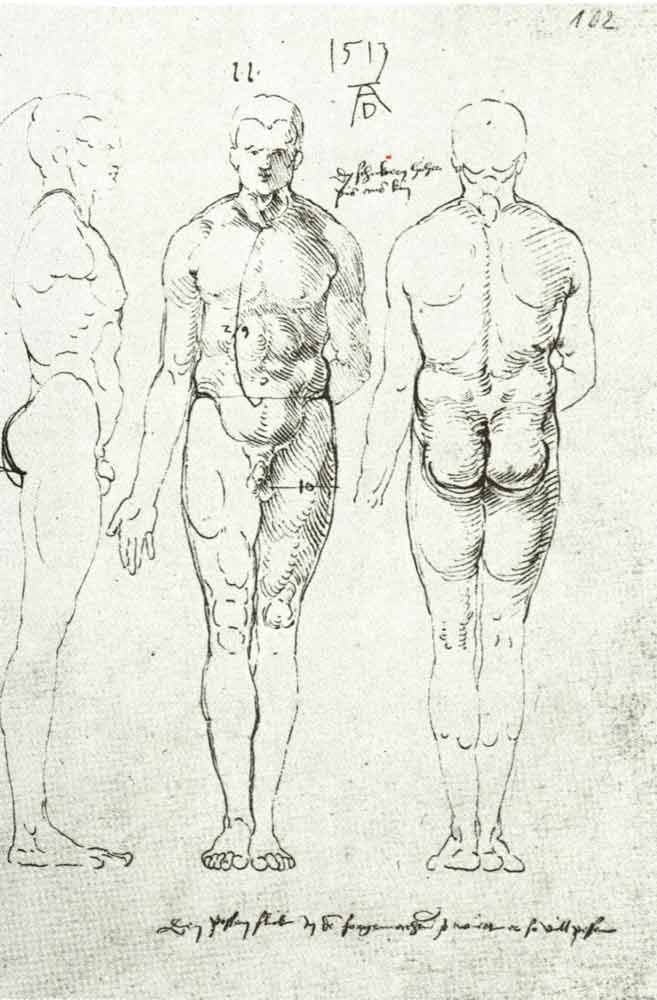
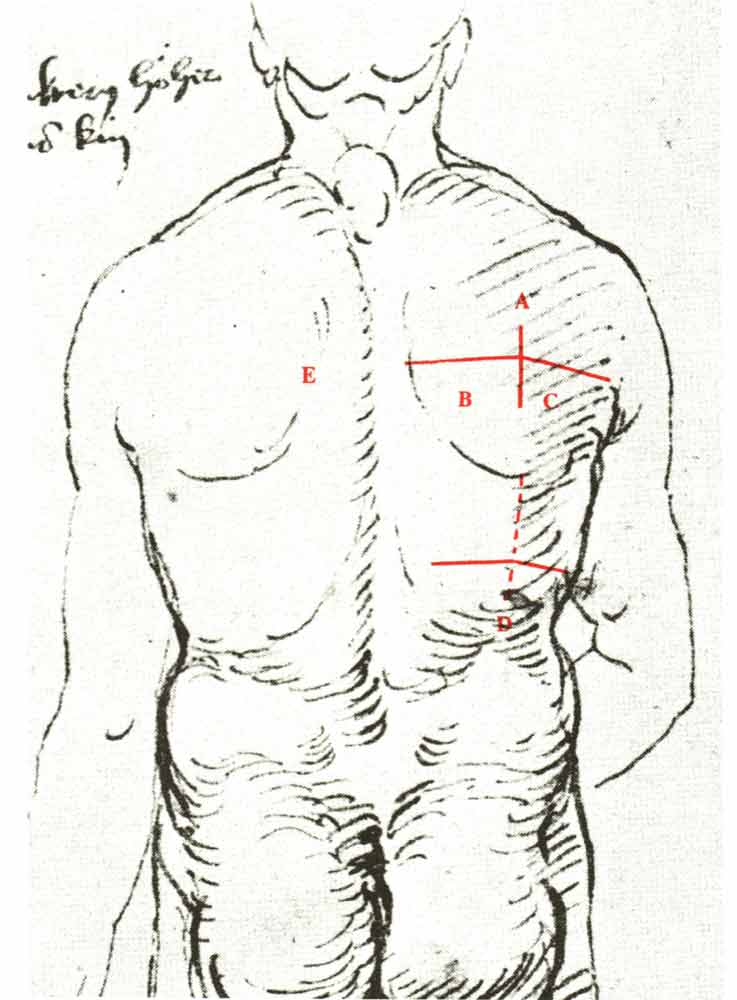
"In Durer's sketch we might imagine a dominant plane break (A) to simplify the light (B) and dark (C) masses of the upper rib cage. The plane break (D) in the lower rib cage is at the well-known line of the angel of the ribs. Darks (E) on the side of the rib cage facing the light are kept generally subdued to emphasize the simplicity and unity of the controlling masses of the two big light and dark shapes." -Hale
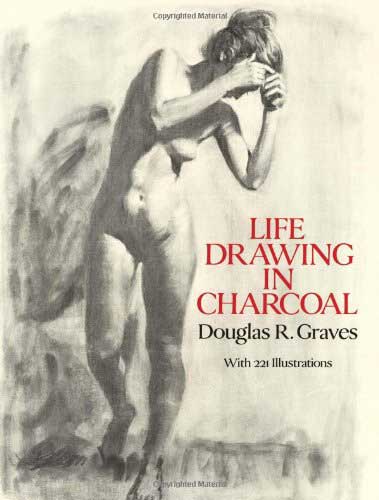
LIFE DRAWING IN CHARCOAL
Douglas Graves
As far as life drawing books go, this one is unique in that it covers a tonal approach to figure drawing. Graves has many examples where he starts with shadow shapes rather than line, chiseling out and refining light and dark shapes out of a loose mess of charcoal. He also demonstrates different effects that can be achieved with charcoal.
Sample Pages: A Tonal Approach
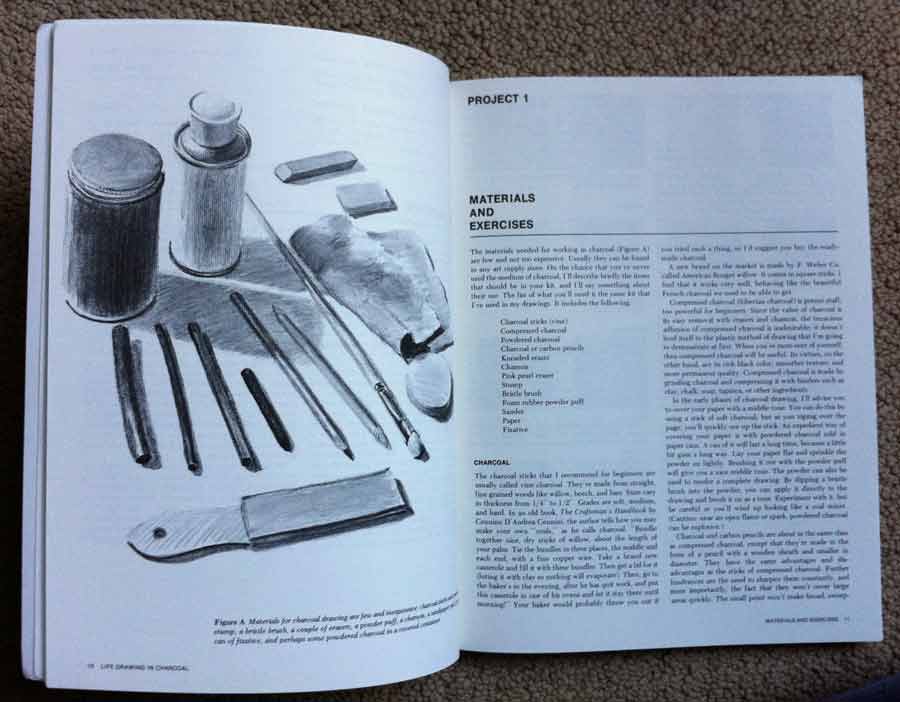
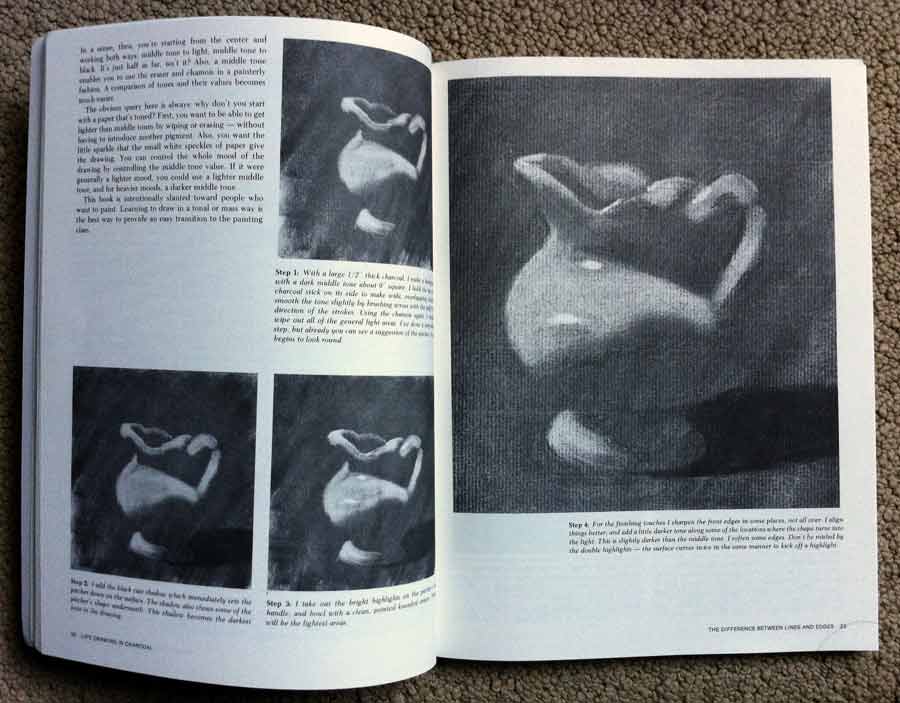
Excerpts: Step-by-step Demonstrations
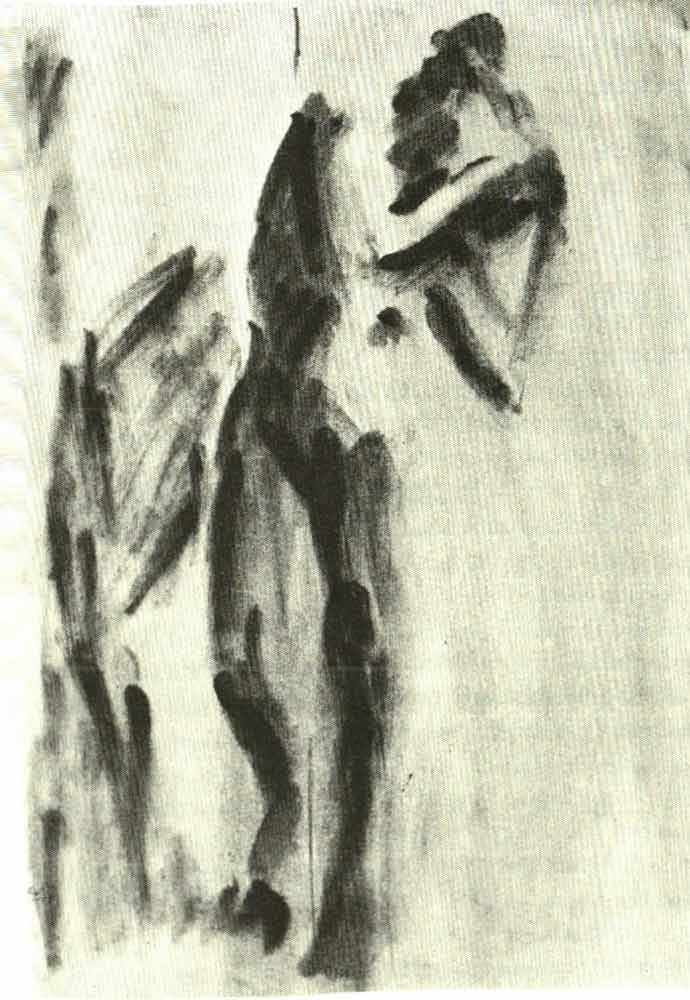
Step 1 - The initial gesture
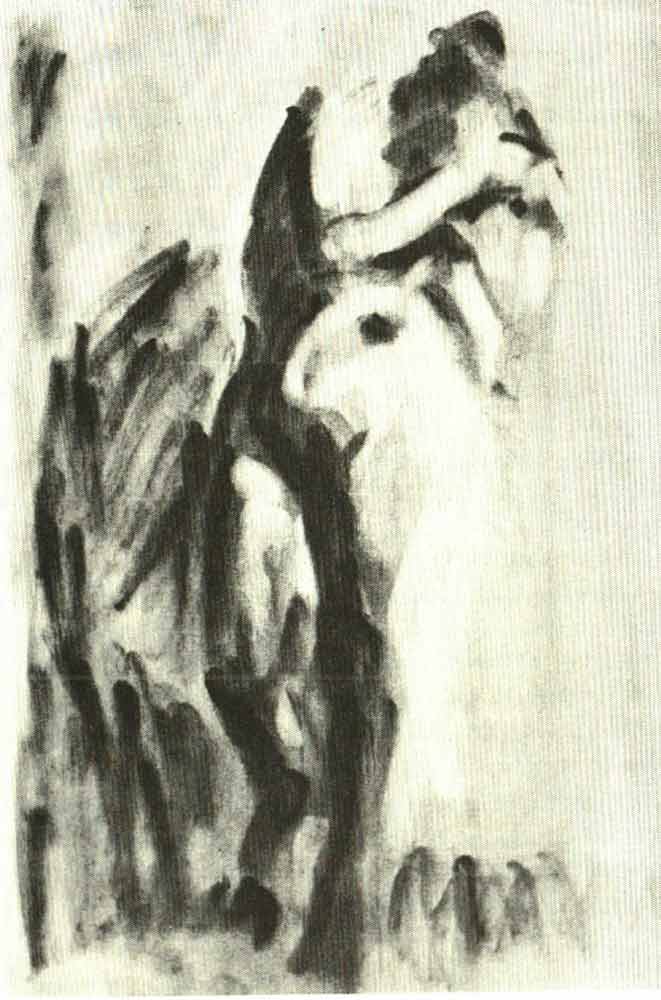
Step 2 - Blocking in the light and dark shapes
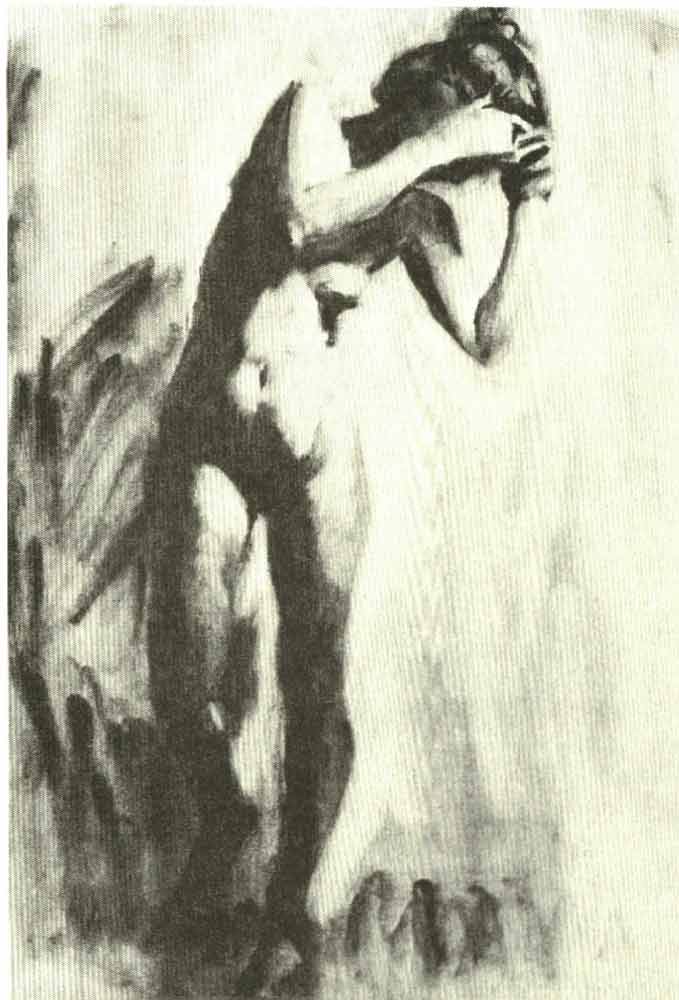
Step 3 - More shape refinement, and more edge quality
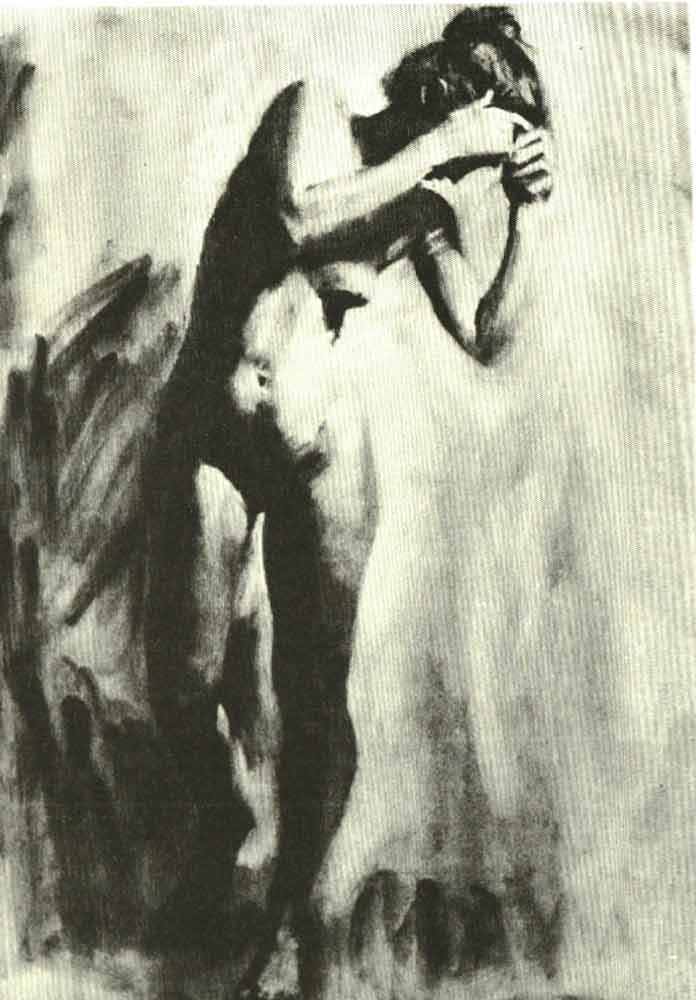
Step 4 - Values adjusted; hands and feet more rendered.
The beauty of this type of rendering is its plasticity. - Graves
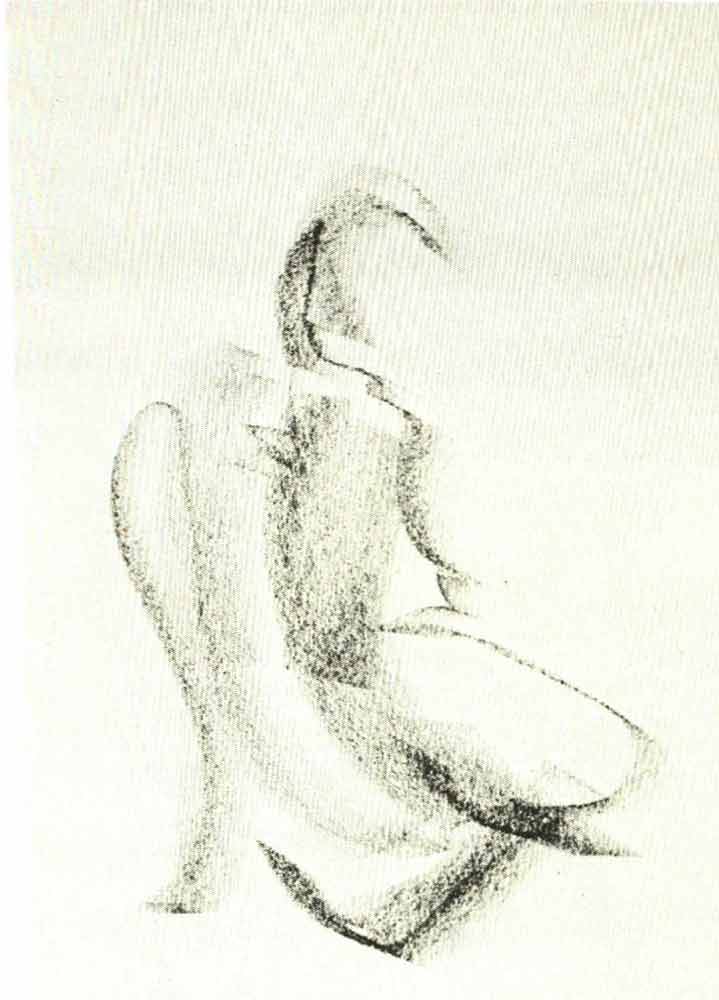
Step 1 - The Gesture, going after mass and action both
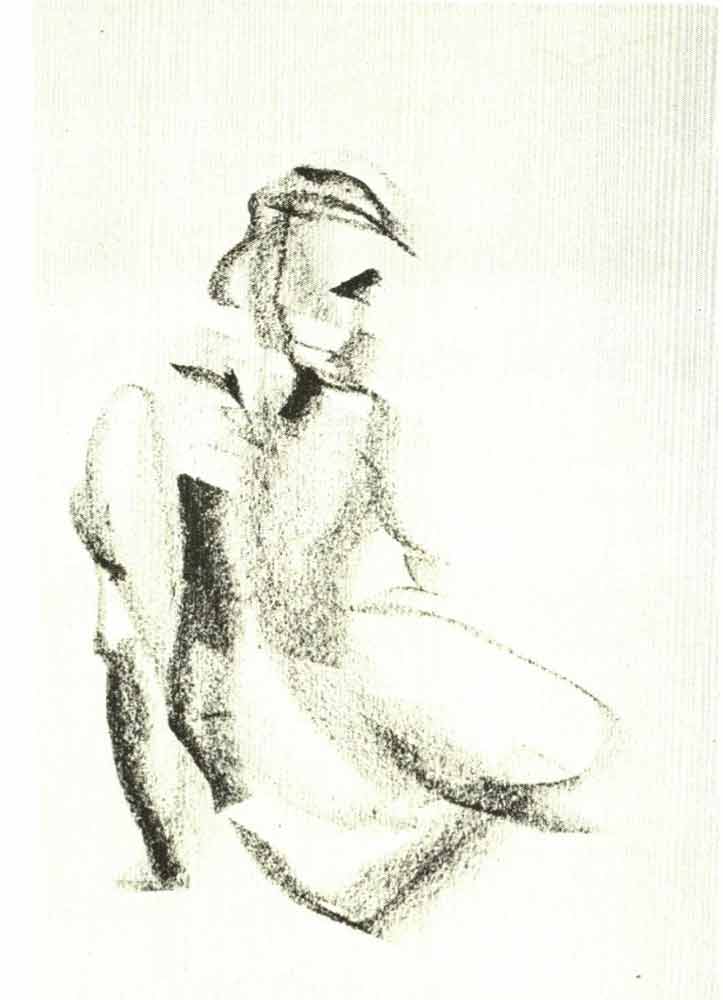
Step 2 - Establishing landmarks through shapes: the "V" establishes eye socket, a dark shape for the throat defines the jaw, a hook for the collarbone, a small sweep for the triceps, a heavy stroke for the inner part of the arm
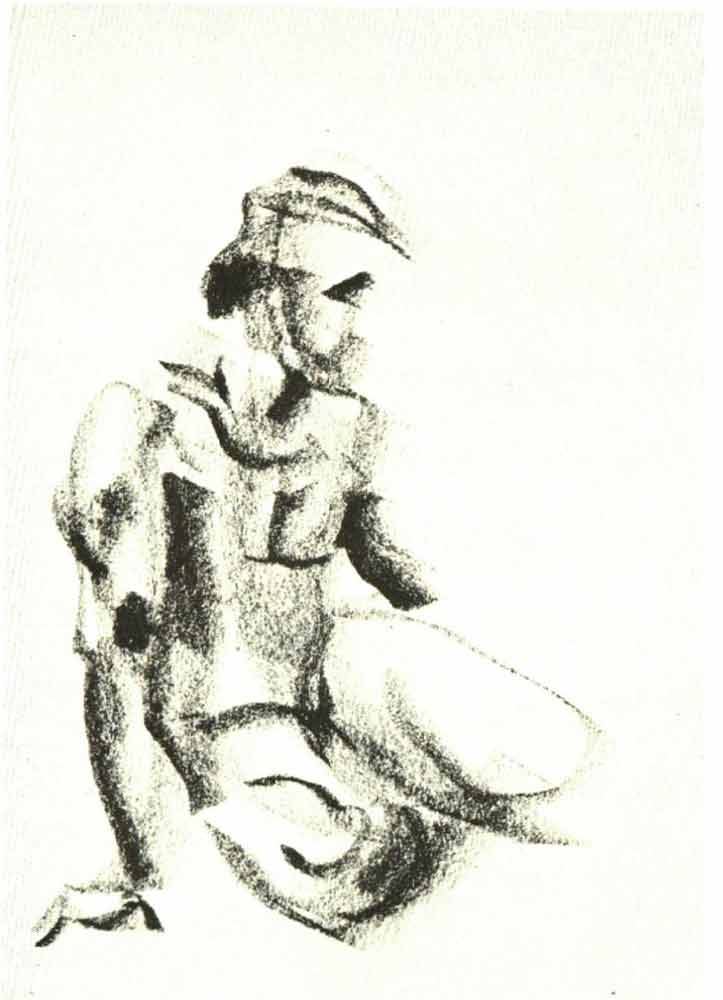
Step 3 - Establishing more points of reference: the collarbone, breast muscles, the spot under the biceps, the crotch, the knee cap and the hand.
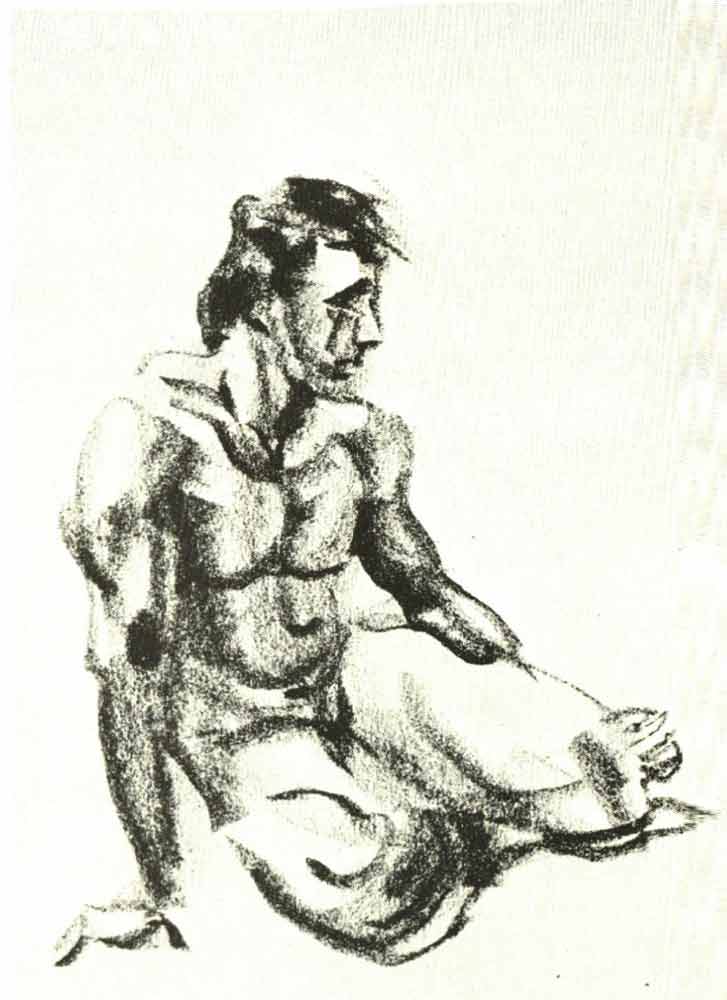
Step 4 - More attention to light and shadow, and halftone to create more solidity and roundness.
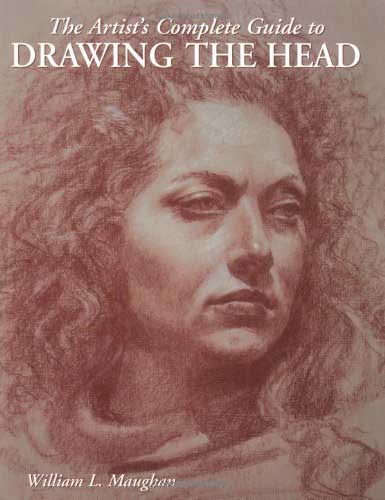
THE ARTIST'S COMPLETE GUIDE TO DRAWING THE HEAD
William L. Maughan
This book focuses on drawing the head using not line but shadow shapes, edges, and value. This method is extremely effective in capturing a photo-real likeness. Maughan covers common drawing mistakes, goes in depth into rendering the features, seeing values, judging proportion, and depicting hard vs soft edges, and includes step-by-step demonstrations of drawing the head.
Excerpts: Common Drawing Mistakes
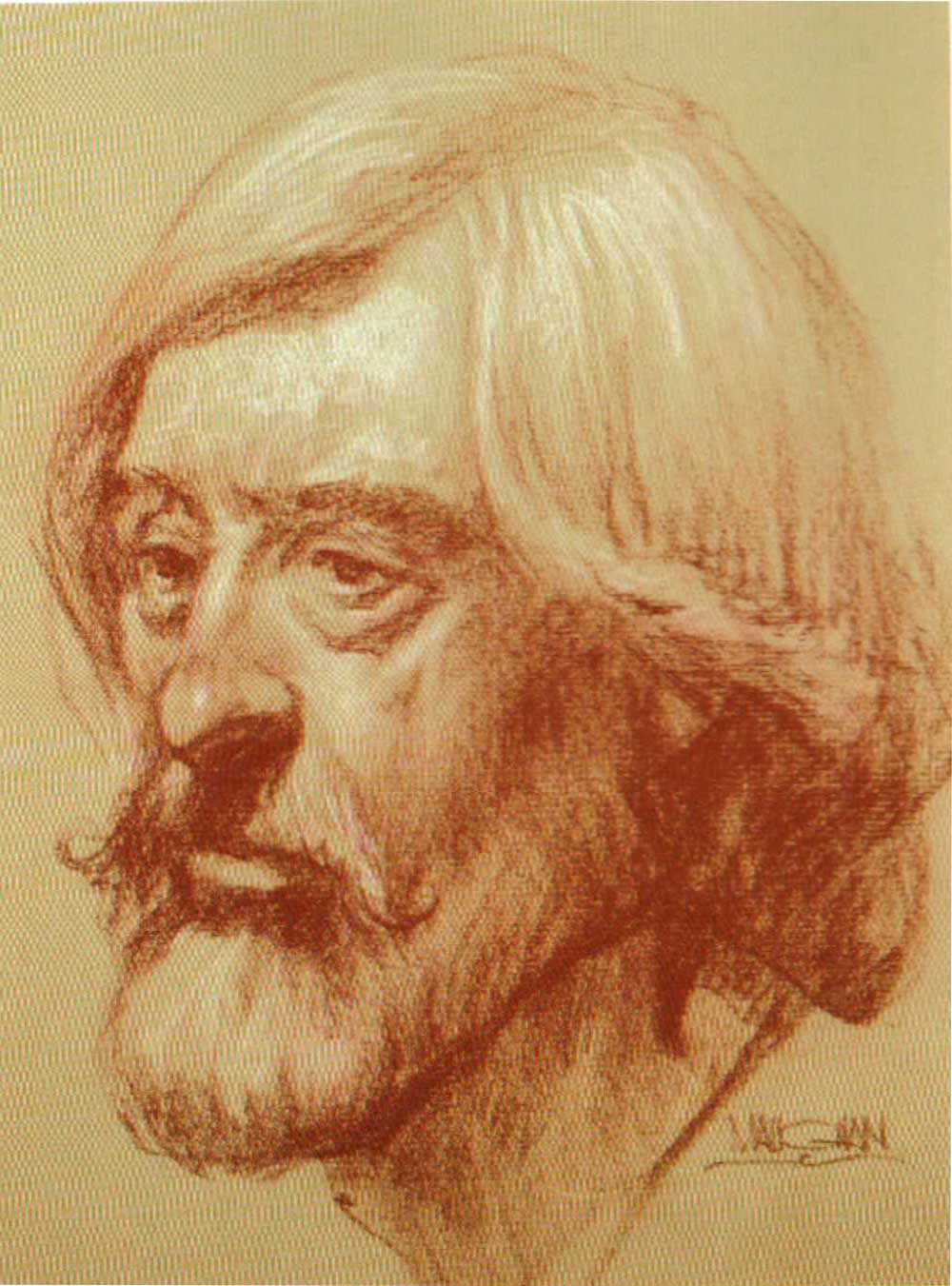
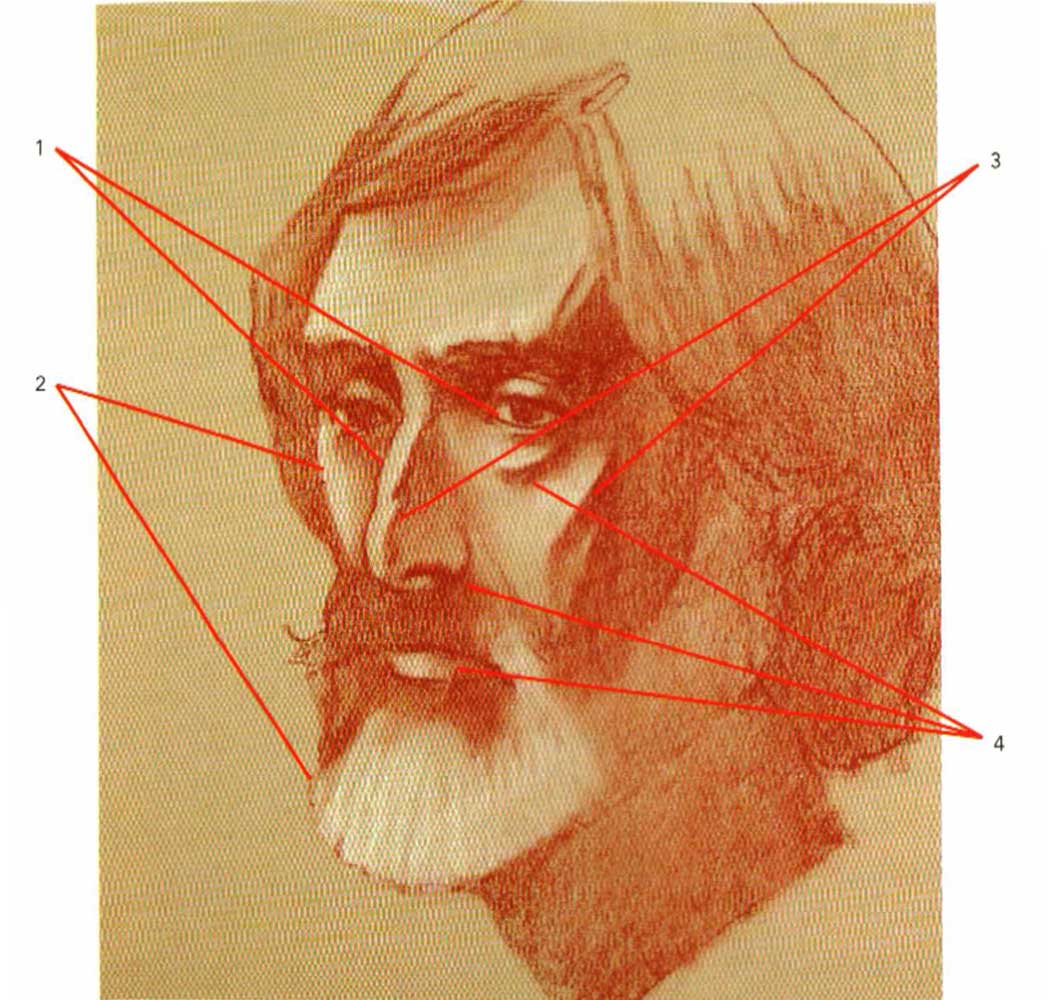
(Above) What Not To Do
1) An Outline used to separate two forms when value should have been used. 2) White applied to the far edge of the form, flattening it. 3) Form Shadow edges too sharp, which makes rounded forms appear square
4) Cast shadows either absent, vague, or soft-edged. They should be hard-edged.
Excerpts: Shadow Shapes and their Edges
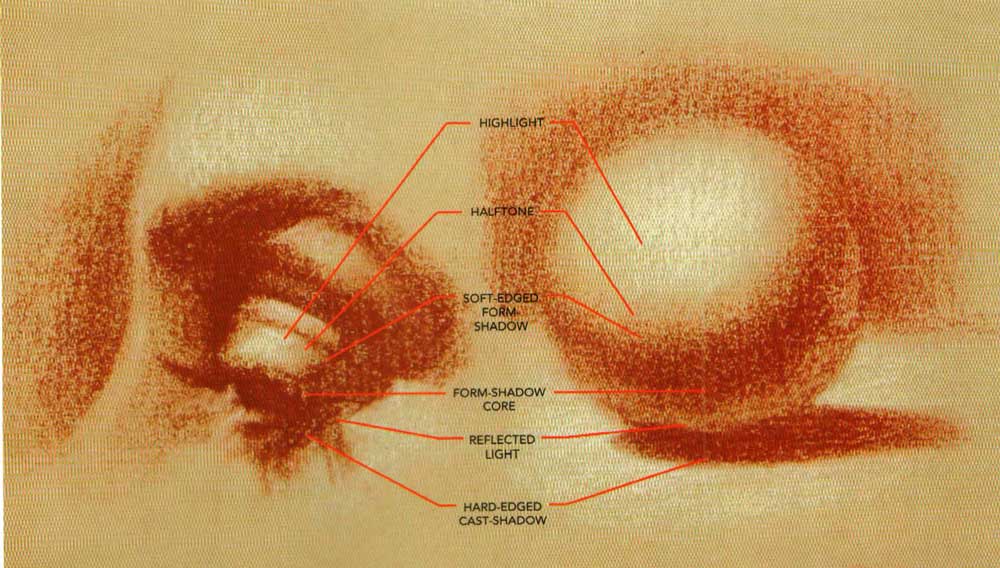
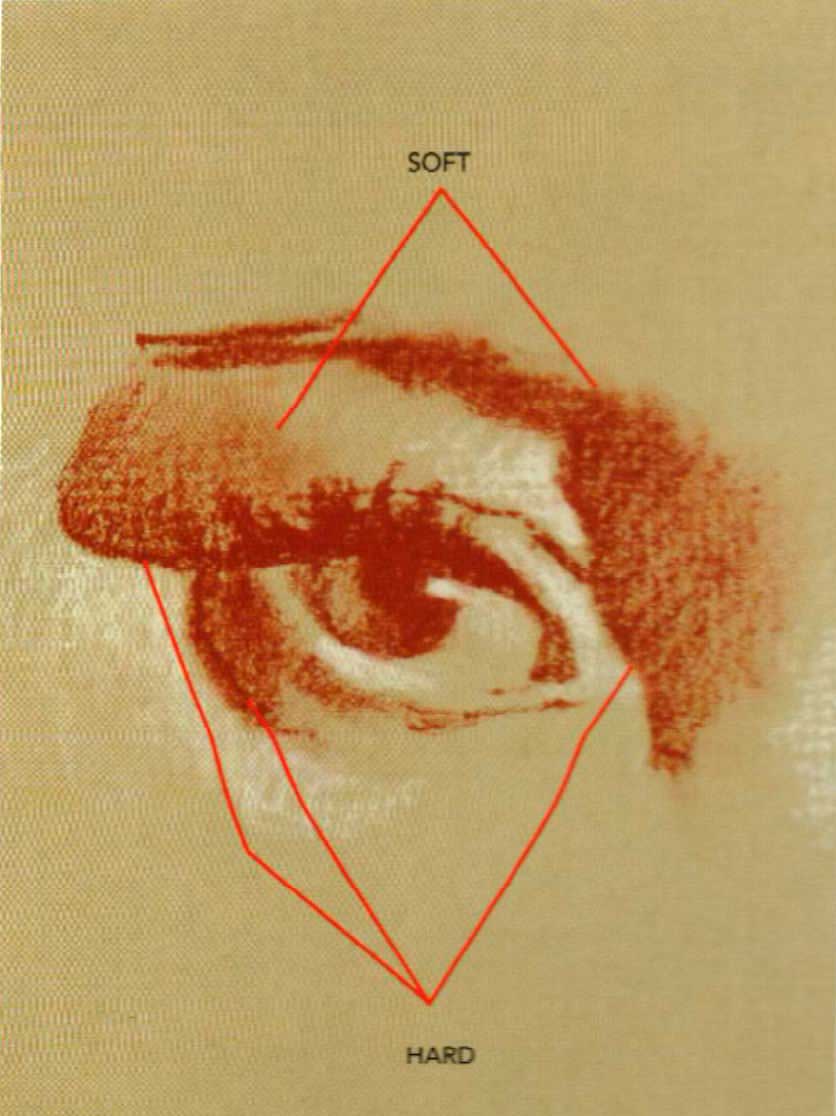
"The sphere is the perfect, simple shape for demonstrating the anatomy of light and shadow. On the sphere the shadow began as a soft form shadow toward the source of light and ended on an adjacent surface as a hard cast shadow away from the light source. This pairing of two round shapes - a ball and an eye - demonstrates how the same principles regarding form and cast shadows apply to both, regardless of subject matter." - Maughan
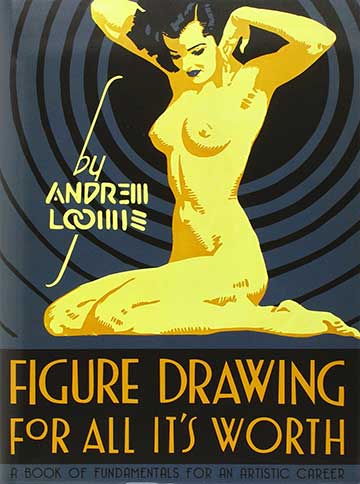
FIGURE DRAWING FOR ALL IT'S WORTH
Andrew Loomis
Loomis has a series of great drawing books. In this book, Loomis focuses on figure drawing and has the standard info such as proportions, anatomy, tone, step-by-steps, etc. What sets this book apart from most figure drawing books though are the pages on the figure and perspective. These pages discuss how to place the figure in perspective, showing common mistakes and corrections, and how to place multiple figures and objects in a composition correctly.
Sample Pages
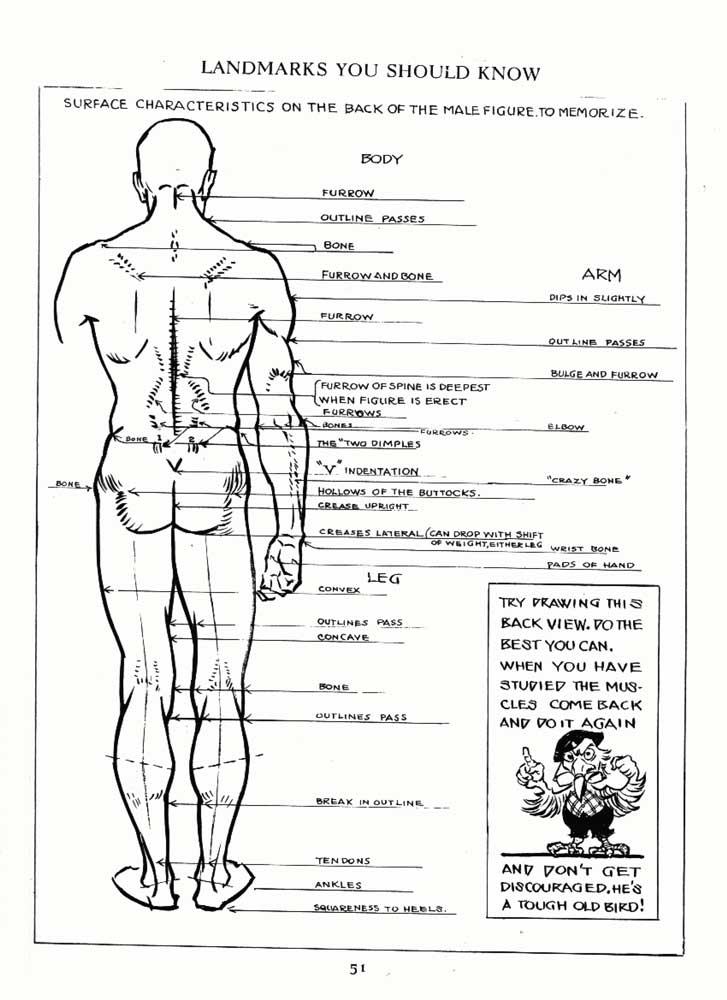
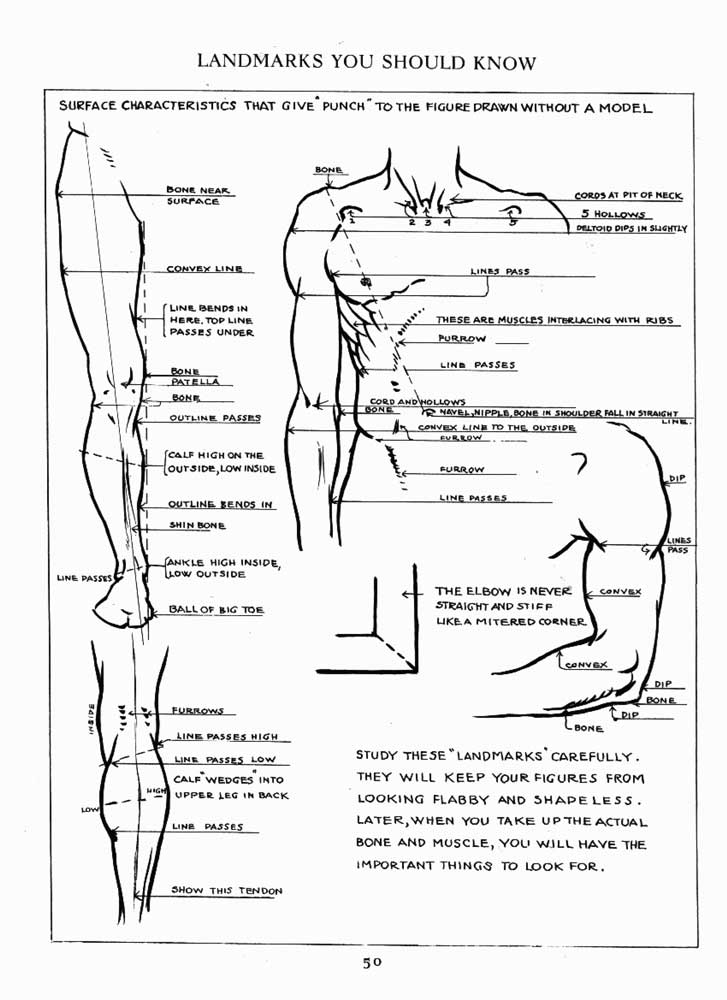
EXCERPT - The Human Figure and Perspective
The key principles to placing figures in perspective: remember that every figure must be related to a single eye level and every figure is related in size to every other figure.
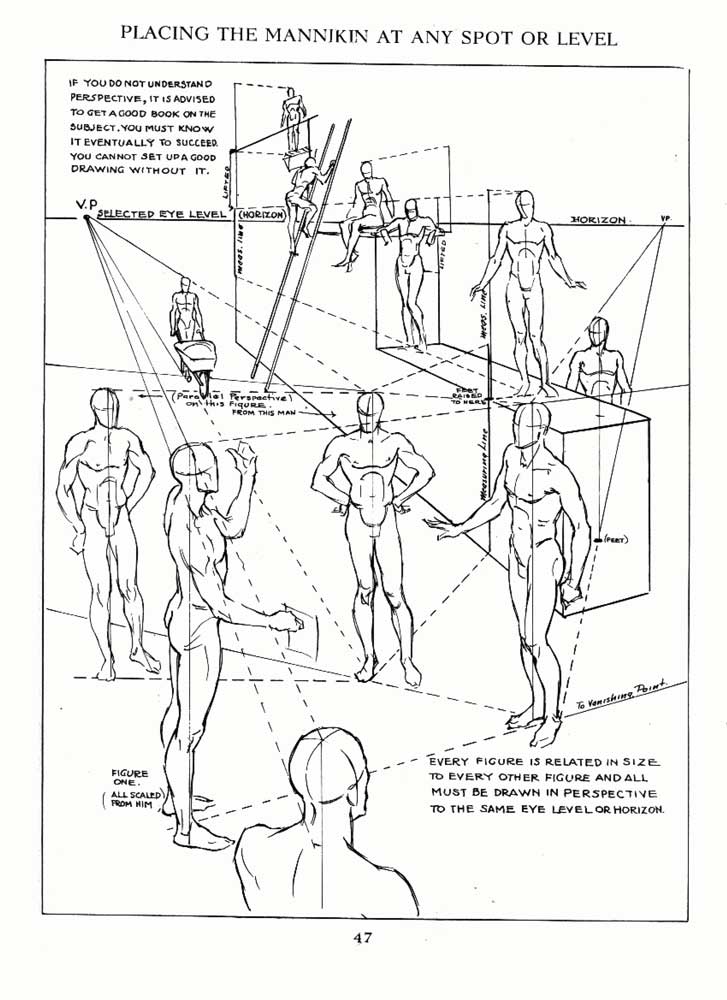
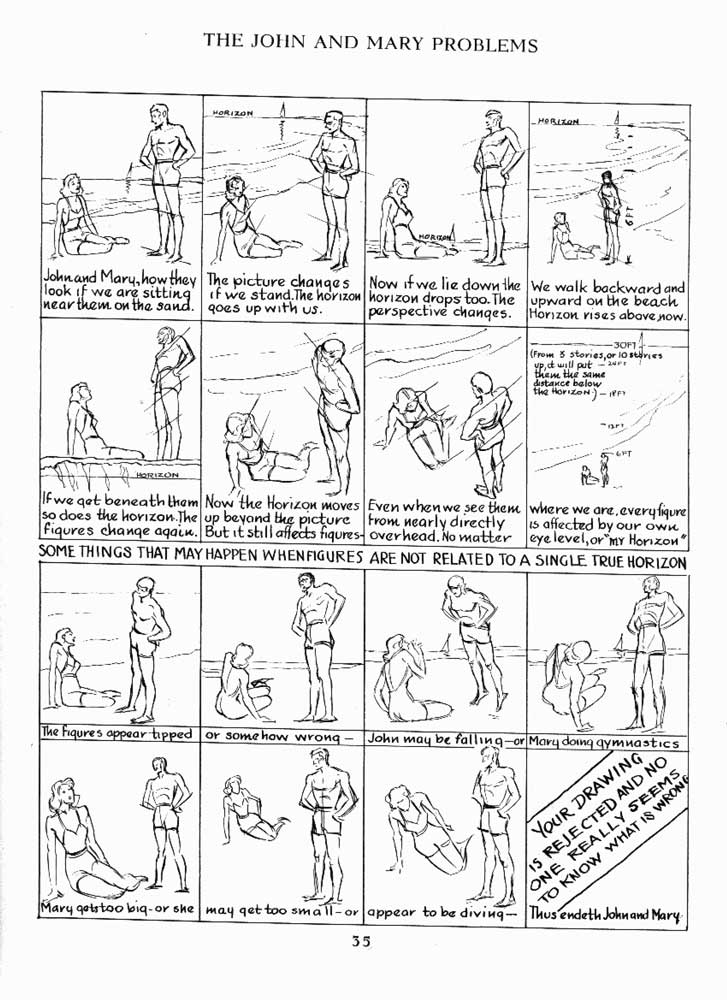
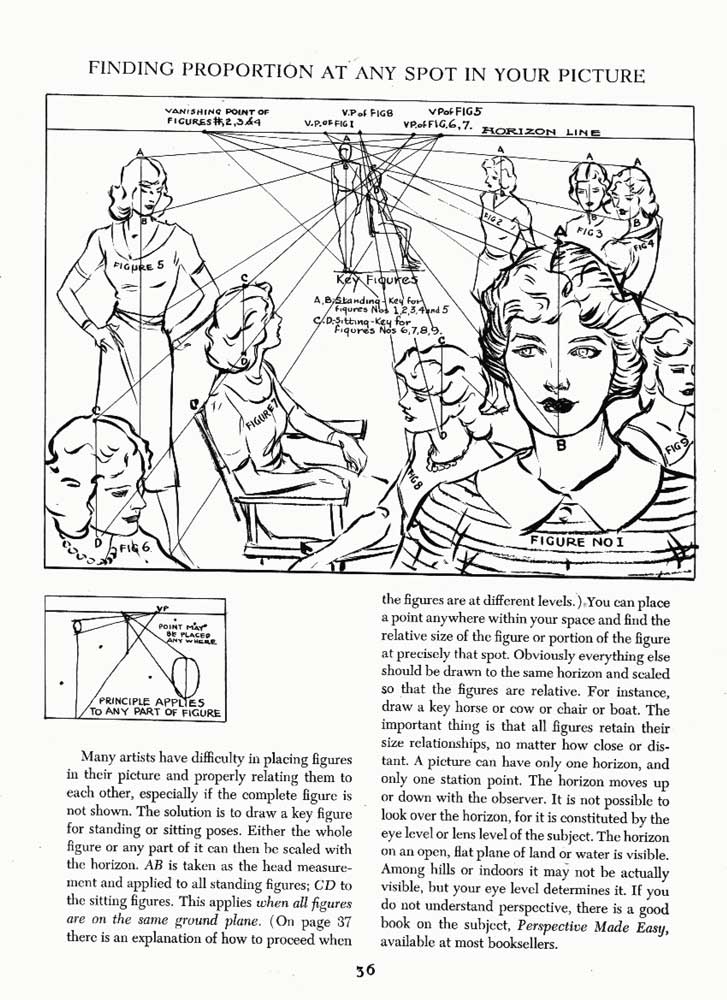
"Many artists have difficulty in placing figures in their picture and properly relating them to each other...The solution is to draw a key figure for standing or sitting poses. Either the whole figure or any part of it can then be scaled with the horizon...You can place a point anywhere within your space and find the relative size of the figure or portion of the figure at precisely that spot...The important thing is that all figures retain their size relationships, no matter how close or distant. " - Loomis
